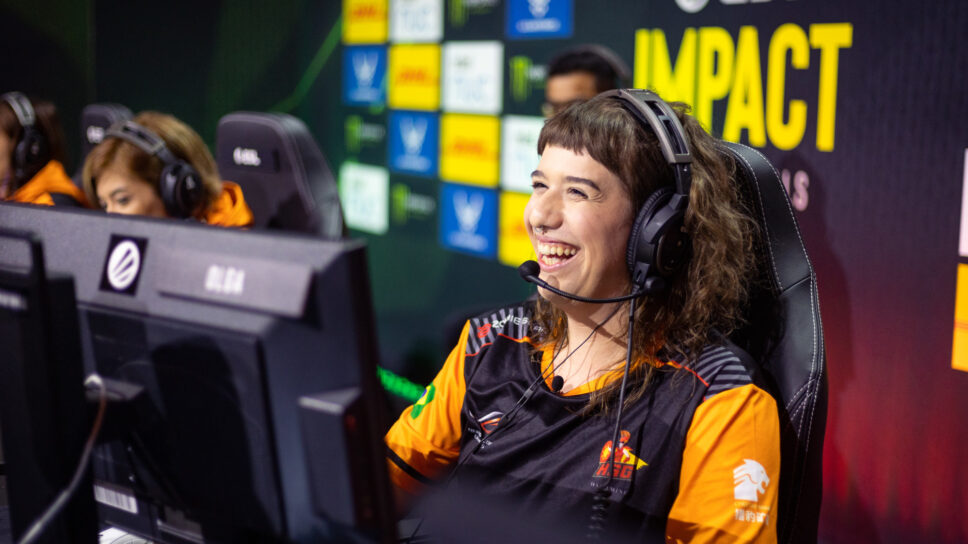Blggzz: Your Daily Dose of Insight
Stay updated with the latest news and informative articles.
Behind the Scenes of CSGO's ESL Tournament Magic
Uncover the secrets behind CSGO's ESL tournament magic. Dive into exclusive insights, epic moments, and the drama that keeps fans hooked!
The Untold Stories: Behind the Scenes of CSGO's ESL Tournament Production
The world of CSGO's ESL Tournament Production is a fascinating blend of technology, strategy, and teamwork. Behind the glitz and glamour of the live broadcasts lies a dedicated crew, who work tirelessly to create an immersive experience for viewers and players alike. Each tournament involves intricate planning, from organizing the venue to ensuring top-notch streaming quality. The rigorous rehearsals, equipment checks, and coordination with players are just a few of the elements that contribute to a seamless production. Without this unsung crew, the spectacle of high-stakes matches could quickly descend into chaos.
Moreover, the intricate details that go into CSGO tournament production often go unnoticed by casual fans. For instance, the use of advanced graphics and real-time analytics enhances the viewer experience, providing insights that keep audiences engaged. Additionally, the production team must handle unexpected challenges, such as technical glitches or last-minute player changes, all while maintaining a professional facade. These untold stories reveal the hard work and creativity that underpin every successful event, reminding us that what we see on screen is just the tip of the iceberg in the larger narrative of competitive gaming.

Counter-Strike is a highly competitive tactical first-person shooter known for its team-based gameplay, where players compete to complete objectives or eliminate the opposing team. One of the interesting features of the game is the variety of weapon skins, including those found in the operation vanguard weapon case, which adds a unique aesthetic element to the gaming experience.
From Setup to Showdown: How CSGO's ESL Tournaments Come to Life
From the initial setup to the climactic showdown, CSGO's ESL tournaments are a thrilling culmination of strategy, teamwork, and skill. The journey begins months in advance as teams prepare meticulously for the various qualifier stages. Players train rigorously, analyzing past matches and refining their tactics. Organizers set the stage, ensuring that every technical element—from live streaming to audience engagement—is planned to perfection. Fans eagerly anticipate the tournament schedule, as the dates draw near, excitement builds within the community, fostering a vibrant atmosphere of friendship and rivalry. Together, these elements create a rich tapestry that brings CSGO's ESL tournaments to life.
Once the qualifiers conclude, the real showdown begins. The top teams, each vying for glory and a share of the prize pool, descend upon the event venue, ready to face off in a series of intense matches. The atmosphere is electric, filled with cheers and chants from passionate fans. Players navigate complex maps while executing precise coordinated plays, showcasing why CSGO's ESL tournaments are considered the apex of competitive gaming. Commentators provide in-depth analyses, adding another layer of excitement for viewers both on-site and online. Ultimately, the culmination of strategy, teamwork, and skill will determine who emerges victorious, etching their name in the annals of CSGO esports history.
What Goes Into Organizing a Major CSGO ESL Tournament?
Organizing a major CSGO ESL Tournament requires meticulous planning and coordination. The first step involves establishing a clear logistical framework, including venue selection, team invitations, and scheduling matches. Venue selection is crucial; it should not only accommodate thousands of fans but also provide necessary technical infrastructure, such as high-speed internet and reliable broadcasting setups. Additionally, a well-structured team invitation process must be crafted to engage both seasoned professionals and rising stars in the esports scene.
Another key component is developing a robust marketing strategy to promote the CSGO ESL Tournament effectively. This involves creating engaging promotional content across various platforms, partnering with relevant sponsors, and utilizing social media to generate buzz. Organizers must also prioritize audience experience by ensuring that facilities such as seating, food availability, and merchandising are up to standard. Lastly, a dedicated team for managing the event day operations—including referees, tech support, and staff—ensures a seamless experience for players and viewers alike.